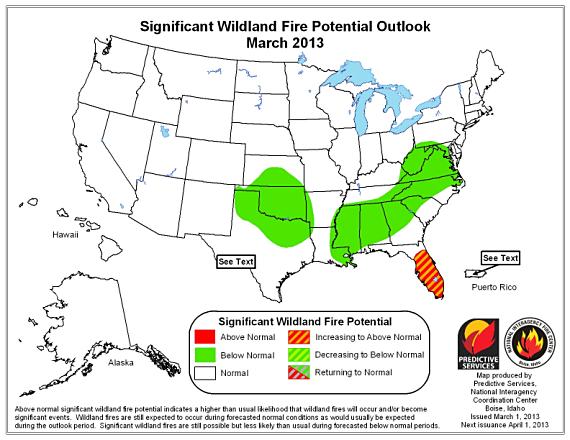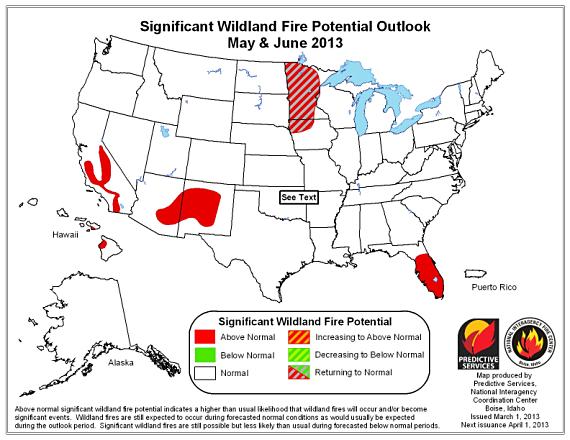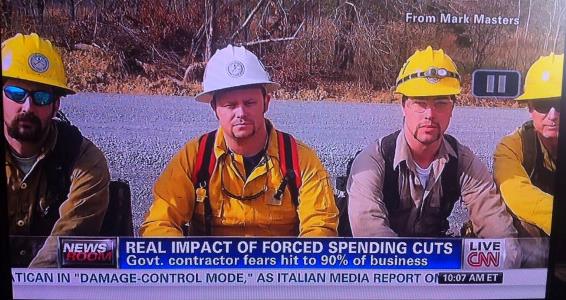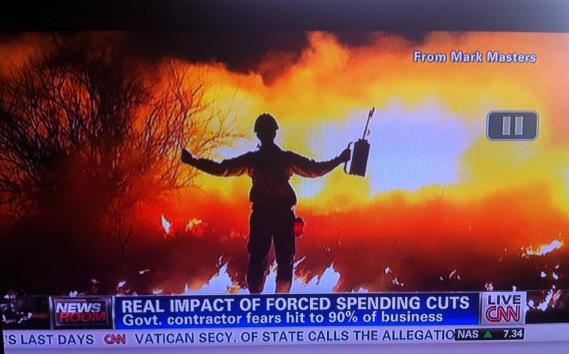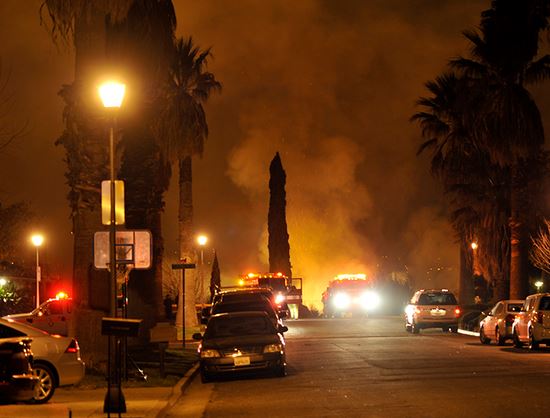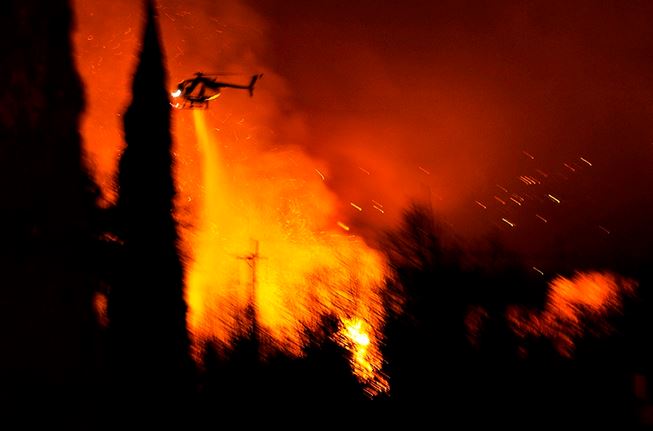This ridiculous manufactured economic fiasco we’re calling sequestration has begun, on a week day when our elected representatives abandoned Washington, leaving their offices empty rather than actually do what we hire them to do, pass a budget, something they have not done in four years. Fire them all, I say!
We attempted to find out what the effects of sequestration will be within the wildland fire divisions of the federal land management agencies. Our usual sources told us either they don’t know, they are still figuring it out, or they passed the buck to bureaucrats in D.C. Here are some samples:
Bureau of Land Management
Donald Smurthwaite said, “Put simply, we’ll have fewer dollars in all of our programs. That will translate to fewer resources on the ground and in support positions.” When pressed for more details, he said they don’t have any numbers yet, and in fact they don’t even know what their funding level is beyond the end of the current Continuing Resolution, which expires near the end of the month.
National Park Service
Our usual excellent source in Boise told us Thursday that they would check and get back to us. We’re still waiting as of 6 p.m. on Friday.
U. S. Forest Service
The only information we could get was from the Department of Agriculture in D.C.:
The USFS is expecting a sequestration amount of $134 million. This will be $42 million below the calculated 10-year average of fire suppression costs for FY 2013. In addition, a reduction of Preparedness funds typically increases suppression costs since the initial attack success will be reduced, they said.
There will be “as many as 200,000 fewer acres treated for hazardous fuels”.
The USFS expects reduced operations at campgrounds, visitor information centers, and offices. This would occur during the peak use seasons in spring and summer. Thousands of private sector jobs in rural communities would be lost due to a reduction of recreation opportunities.
The agency would close up to 670 public developed recreation sites out of a total of 19,000 sites, such as campgrounds, picnic areas, and trailheads.
There would be a decrease of 35 sworn law enforcement officers, leaving 707 total officers to control drug trafficking organizations, prevent crime, and protect and serve the public. According to the agency, this would result in an increase in arson during the fire season, timber theft, and other natural resource crimes.
Timber volume sold would be reduced from 2,800 million board feet proposed for FY 2013, to 2,379 million board feet.
What’s next?
The USFS has already distributed warning letters to their employees about possible furloughs, so while some play down the effects of the across the board mindless budget cuts, the impacts could be real on real people. As could be the effects on the ability of the agencies to protect and manage our national treasures, the parks, forests, refuges, and other public lands. The timing is not great either, as the fire agencies are trying to hire seasonal firefighters and as several long term contracts for next-generation, very large, and legacy air tankers are about to be issued – or not issued. A lot of real people are waiting to see how this fiasco will affect them and their families.
We will stay on top of this and let you know when we hear more.


